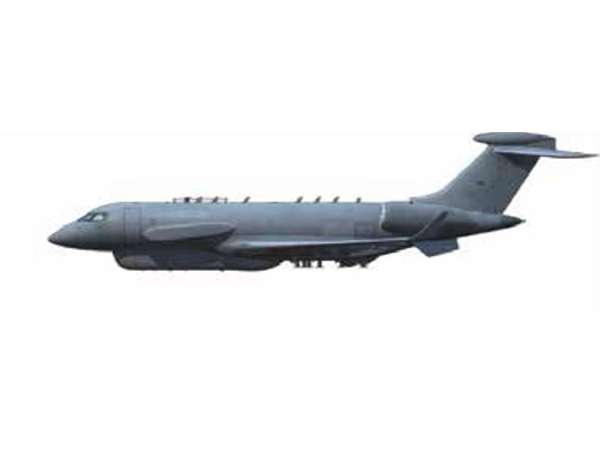
India’s commitment to strengthening iis capabilities has received a monumental boost with the approval of a $2.3 billion (Rs. 20,000 crore) project aimed at developing next-generation Airborne Warning and Control Systems (AWACS) for the Indian Air Force (IAF).
This initiative underscores the nation’s relentless pursuit of technological advancement and self-reliance in defence, promising to significantly enhance the country’s aerial surveillance, reconnaissance, and situational awareness.
A strategic leap forward in aerial surveillance
The decision to greenlight this project reflects India’s foresight in addressing evolving security challenges in an increasingly complex geopolitical landscape.
AWACS platforms are critical force multipliers that provide real-time intelligence, surveillance, and command and control functions from airborne platforms.
These systems detect, track, and engage threats at extended ranges, giving the IAF an unparalleled operational advantage in airspace management.
The upcoming generation of AWACS will incorporate cutting-edge radar technology, advanced sensor fusion, and artificial intelligence-driven analytics.
This will allow the Indian Air Force to monitor vast stretches of airspace with improved accuracy and responsiveness.
Enhanced detection capabilities mean earlier warnings and better coordinated responses to any aerial or missile threats.
Boosting indigenous defence technology and manufacturing
A remarkable aspect of this $2.3 billion project is the strong emphasis on indigenous research, development, and manufacturing.
Aligning with the Government of India’s 'Make in India' and 'Atmanirbhar Bharat' initiatives, this endeavour will not only reduce dependence on foreign suppliers but also invigorate the domestic defence industry ecosystem.
Indian defence research institutions, along with private and public sector enterprises, will collaborate to design, develop, and manufacture the critical components of these AWACS platforms.
This collaboration is poised to foster innovation, create high-value jobs, and develop specialised skills within the country. The multiplier effect of this project on India’s defence industrial base will be profound and far-reaching.
Enhanced operational readiness and joint force integration
Next-generation AWACS platforms will play a pivotal role in enhancing the operational readiness of the Indian Air Force.
With improved early warning and command capabilities, the IAF can conduct more effective air defence, offensive operations, and maritime surveillance.
Moreover, these systems are designed to seamlessly integrate with other branches of the Indian Armed Forces, such as the Army and Navy, promoting a unified and synchronised approach to national defence.
Such joint force integration ensures that India is better prepared to address multi-domain challenges, be it conventional or asymmetric warfare.
Strengthening regional security and strategic autonomy
The project aligns with India’s strategic objectives of safeguarding its sovereignty and asserting its role as a responsible regional power.
By investing in sophisticated surveillance technologies, India strengthens its deterrence capabilities and reinforces its commitment to maintaining peace and stability in the region.
The enhanced AWACS systems will serve as vital tools in monitoring cross-border activities and preventing incursions, thus contributing to a secure environment conducive to economic growth and development.
This proactive stance on security reflects India’s aspiration for strategic autonomy and self-reliance in defence preparedness.
Driving technological innovation and global competitiveness
The development of next-generation AWACS represents a leap forward in aerospace and defence technology within India.
The project will stimulate research in radar technology, avionics, communication systems, and electronic warfare capabilities, positioning India at the forefront of these critical fields.
This technological progress not only benefits national defence but also enhances India’s prospects as an exporter of advanced defence equipment.
As India develops sophisticated indigenous solutions, it can participate more competitively in the global defence market, opening avenues for strategic partnerships and defence diplomacy.
Empowering IAF for future challenges
In an era where aerial dominance and information superiority dictate the outcomes of conflicts, the approval of this $2.3 billion AWACS project equips the Indian Air Force with tools essential for modern warfare.
The enhanced capabilities will enable the IAF to monitor and manage airspace with greater precision, track adversaries, and coordinate responses swiftly.
This initiative ensures that the IAF remains agile, adaptive, and prepared for future challenges, including emerging domains such as cyber and space warfare.
The integration of advanced sensors and AI analytics will empower commanders with actionable intelligence, transforming decision-making and operational effectiveness.
A milestone in India’s defence modernisation journey
The clearance of the $2.3 billion project to develop next-generation Airborne Warning and Control Systems marks a defining moment in India’s defence modernisation journey.
It reflects a comprehensive vision that embraces cutting-edge technology, indigenous innovation, and strategic foresight.
By enhancing aerial surveillance and command capabilities, this project not only fortifies India’s defence posture but also stimulates economic growth, technological advancement, and strategic autonomy.
It is a testament to India’s unwavering commitment to securing its skies and asserting its position as a resilient and technologically advanced nation on the global stage.
With this decisive step, India moves closer to realising its vision of a strong, self-reliant defence ecosystem that safeguards the nation’s interests and contributes to regional and global peace.